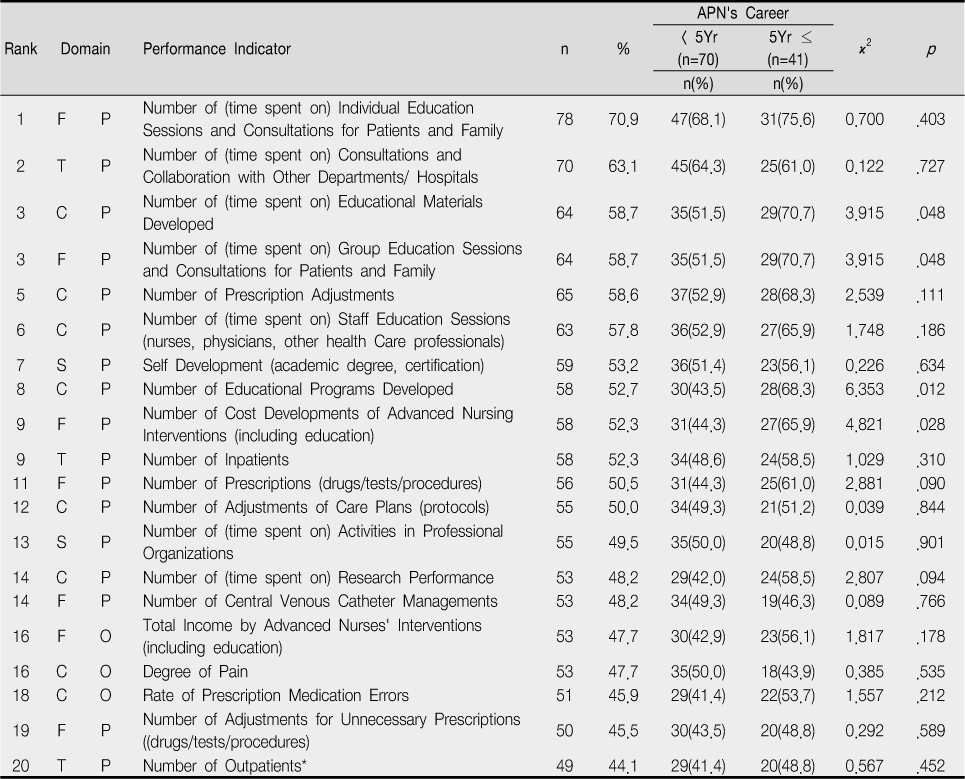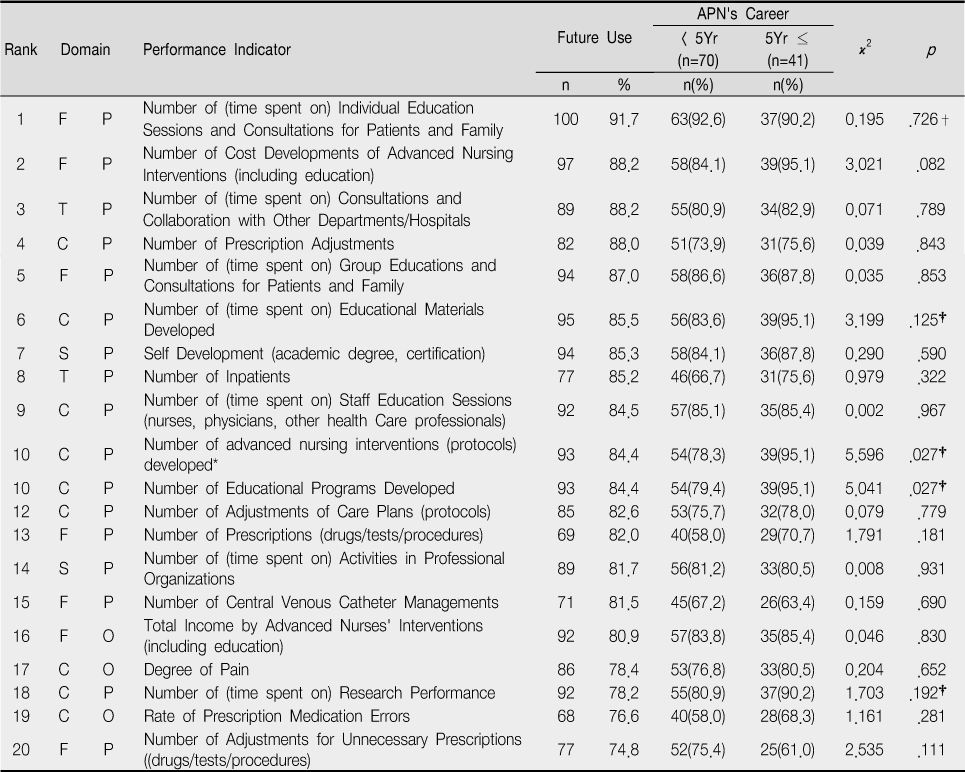1Professor, Department of Clinical Nursing Science, Samsung Medical Center, Sungkyunkwan University School of Medicine, Korea.
2Assistant Professor, Department of Nursing Science, School of Oriental Medicine in WooSuk University, Korea.
3Associate Professor, Department of Clinical Nursing Science, Samsung Medical Center, Sungkyunkwan University School of Medicine, Korea.
Copyright © 2012 Korean Academy of Nursing Administration
This study was financially supported by the research fund of nursing department of Samsung Medical Center and Woosuk University.


This table is shown statistics on yes only and no respondents were excluded.
APN=advanced practice nurse;
C=Clinical indicator; F=Financial indicator; S=Satisfaction indicator; T=Time saving indicator; P=Process; O=Outcome
*Added indicator among performance indicators of experienced use
†Fisher's exact test

General Characteristics of Participants and Difference according to APN's Career (N=111)
APN=advanced practice nurse, ICU=Intensive care unit, OPD=Outpatient department
*Multiple answers allowed and shown statistics on yes only
No respondents were excluded.
Ranks of Past and Future Use of Performance Indicator (N=111)
C=Clinical indicator; F=Financial indicator; S=Satisfaction indicator; T=Time saving indicator; P=Process; O=Outcome
No respondents was excluded.
High Ranked Performance Indicators on Past Use and Differences according to APN's Career (N=111)
This table is shown statistics on yes only and no respondents were excluded.
APN=advanced practice nursing
C=Clinical indicator; F=Financial indicator; S=Satisfaction indicator; T=Time saving indicator;
P=Process; O=Outcome
*Dropped indicator among performance indicators of future use
High Ranked Performance Indicators on Future Use and Difference according to APN's Career (N=111)
This table is shown statistics on yes only and no respondents were excluded.
APN=advanced practice nurse;
C=Clinical indicator; F=Financial indicator; S=Satisfaction indicator; T=Time saving indicator; P=Process; O=Outcome
*Added indicator among performance indicators of experienced use
†Fisher's exact test
APN's Perception on Performance (N=111)
APN=advanced practice nurse, No respondents were excluded.
APN=advanced practice nurse, ICU=Intensive care unit, OPD=Outpatient department *Multiple answers allowed and shown statistics on yes only No respondents were excluded.
C=Clinical indicator; F=Financial indicator; S=Satisfaction indicator; T=Time saving indicator; P=Process; O=Outcome No respondents was excluded.
This table is shown statistics on yes only and no respondents were excluded. APN=advanced practice nursing C=Clinical indicator; F=Financial indicator; S=Satisfaction indicator; T=Time saving indicator; P=Process; O=Outcome *Dropped indicator among performance indicators of future use
This table is shown statistics on yes only and no respondents were excluded. APN=advanced practice nurse; C=Clinical indicator; F=Financial indicator; S=Satisfaction indicator; T=Time saving indicator; P=Process; O=Outcome *Added indicator among performance indicators of experienced use †Fisher's exact test
APN=advanced practice nurse, No respondents were excluded.